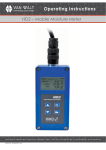Download User Manual - Galileo Bioscience
Transcript
Table of Contents Cover Page ………………………………………………...........…........... CP TOC ……………………………………………………………….…........... TOC Title Page/Contact Info…………………………………………..…........... 1 Warranty/Component Illustration……………………………….…........... 2 Packing Lists……………………………………………………...…........... 3-4 Environmental Conditions/Safety Precautions……………......…........... 5 Instructions For Use Introduction……………………………………………….............…...........6 Safety Precautions…………………………………...................…........... 7 General Specifications & Operating Parameters…….........…........... 7 General Care & Cleaning………………………………….........…........... 8 Gel Plate Preparation…………………………………………….…...........8 Gel Plate (Cassette) Assembly…………………………...........…........... 8 Unit Assembly For Casting and Running Gels………………..…........... 9 Casting The Gel………………………………………................…........... 10-11 Gel and Buffer Volumes…………………………………...........…........... 11 Sample Loading…………………………………………………..…........... 11 Comb Options……………………………………………............…........... 12 -13 Cooling Option…………………………………………...............…........... 13 Starting/Ending The Run………………………………..............….......... 13-14 Troubleshooting…………………………………………………..…........... 14-15 Reagent Information…………………………………….............…........... 16 Replacement Parts……………………………………………….…........... 17 Chemical Compatibility Chart…………………………..............…........... 18 Notes………………………………………………………...........…........... 19 Copyright Galileo Bioscience™ 2004 – TOC TWIN VERTICAL ELECTROPHESIS SYSTEM USER’S MANUAL rev. 10/1/04 85-1010-WCS, 85-1010-NCS, 85-2010-WCS, 85-2010-NCS, 85-1614, AND 85-2020 WARNING THESE UNITS ARE CAPABLE OF DELIVERING POTENTIALLY LETHAL VOLTAGE WHEN CONNECTED TO A POWER SUPPLY AND ARE TO BE OPERATED ONLY BY QUALIFIED TECHNICALLY TRAINED PERSONNEL. PLEASE READ THE ENTIRE OPERATOR’S MANUAL THOROUGHLY BEFORE OPERATING THIS UNIT. UNITS COMPLY WITH THE STATUTORY CE SAFETY DIRECTIVES Galileo Bioscience P. O. Box 390566 Cambridge, MA 02139 Toll Free: 877-481-9175 Tel: 781-481-9175 Fax: 781-481-9214 www.galileobioscience.com Copyright Galileo Bioscience™ 2004 – Page 1 WARRANTY Please check that the unit has been received complete and undamaged. Refer to the Packing Lists on pages 3 & 4 and check that all components and accessories are present. Be sure to save all packaging and documents until you have thoroughly inspected your shipment, if you should find that your order is incorrect or damaged, call for return instructions. Galileo Bioscience (Galileo) guarantees that the Vertical Electrophoresis System you have received has passed rigorous quality assurance protocols and meets its published specification. This warranty is valid for 48 months, only if the product has been used and cared for according to this user manual. No liability is accepted for loss or damage arising from incorrect use. Galileo’s liability is limited to the repair or replacement of the unit or refund of the purchase price, at our option. Galileo is not liable for any consequential damages. Galileo reserves the right to alter the specifications of the Vertical Electrophoresis Systems without prior notice. This will enable us to implement improvements as soon as they become available. VERTICAL ELECTROPHORESIS SYSTEM COMPONENTS To Power Supply Lid Upper Buffer Chamber Lower Buffer Chamber Casting Base Copyright Galileo Bioscience™ 2004 – Page 2 PACKING LISTS 85-1010-WCS & 85-1010-NCS (1) User's Manual (1) Safety Lid with integral double insulated power cords (rated safe up to 1,000 volts) with Retractable Sheathed Power Connectors (1) Upper Buffer Chamber with color coded electrodes and gold plated banana plugs 85-1010-WCS unit has a cooling core sealed with an alumina plate & "in and "out" Hose Barb Fixtures for water circulation (1) Lower Buffer Chamber (4) Blank Glass Plates, 10cmW x 10cmL x 0.24cm thick (2) Notched Glass Plates, 10cmW x 10cmL x 0.24cm thick (2) Notched Alumina Plates, 10cmW x 10cmL x 0.10cm thick (1) Blocking Plate for running one gel (4) Side Spacers, 0.8mm thick (2) 10 well Teflon® Comb, 0.8mm thick (1) Set (2) replacement gaskets for the upper buffer chamber (1) Casting Base (1) Set (2) replacement gaskets for the casting base 85-2010-WCS & 85-2010-NCS (1) User's Manual (1) Safety Lid with integral double insulated power cords (rated safe up to 1,000 volts) with Retractable Sheathed Power Connectors (1) Upper Buffer Chamber with color coded electrodes, gold plated banana plugs 85-2010-WCS units has a cooling core sealed with an alumina plate & "in and "out" Hose Barb Fixtures for water circulation (1) Lower Buffer Chamber (4) Blank Glass Plates, 20cmW x 10cmL x 0.32cm thick (4) Notched Glass Plates, 20cmW x 10cmL x 0.32cm thick (1) Blocking Plate for running one gel (8) Side Spacers, 0.8mm thick (2) 15 well Teflon® Comb, 0.8mm thick (2) 20 well Teflon Comb®, 0.8mm thick (1) Set (2) replacement gaskets for the upper buffer chamber (1) Casting Base (1) Set (2) replacement gaskets for the casting base 85-1614 Copyright Galileo Bioscience™ 2004 – Page 3 (1) User's Manual (1) Safety Lid with integral double insulated power cords (rated safe up to 1,000 volts) with Retractable Sheathed Power Connectors (1) Upper Buffer Chamber with color coded electrodes and gold plated banana plugs 85-1614 units have a cooling core sealed with an alumina plate & "in and "out" Hose Barb Fixtures for water circulation (1) Lower Buffer Chamber (4) Blank Glass Plates, 16cmW x 14cmL x 0.32cm thick (4) Notched Glass Plates, 16cmW x 14cmL x 0.32cm thick (1) Blocking Plate for running one gel (8) Side Spacers, 1.5mm thick (2) 15 well Teflon® Comb, 1.5mm thick (2) 20 well Teflon® Comb, 1.5mm thick (1) Set (2) replacement gaskets for the upper buffer chamber (1) Casting Base (1) Set (2) replacement gaskets for the casting base 85-2020 (1) User's Manual (1) Safety Lid with integral double insulated power cords (rated safe up to 1,000 volts) with Retractable Sheathed Power Connectors (1) Upper Buffer Chamber with color coded electrodes and gold plated banana plugs 85-2020 units have a cooling core sealed with an alumina plate & "in and "out" Hose Barb Fixtures for water circulation (1) Lower Buffer Chamber (4) Blank Glass Plates, 20cmW x 20cmL x 0.32cm thick (4) Notched Glass Plates, 20cmW x 20cmL x .032cm thick (1) Blocking Plate for running one gel (8) Side Spacers, 1.5mm thick (2) 15 well Teflon Comb, 1.5mm thick (2) 20 well Teflon Comb, 1.5mm thick (1) Set (2) replacement gaskets for the upper buffer chamber (1) Casting Base (1) Set (2) replacement gaskets for the casting base Copyright Galileo Bioscience™ 2004 – Page 4 ENVIRONMENTAL CONDITIONS FOR USE ¾ This unit is intended for indoor use only ¾ This unit can be operated safely at an altitude of 2,000 m ¾ The normal operating temperature range is between 4ºC and 65ºC ¾ Maximum relative humidity 80% for temperatures up to 31ºC decreasing linearly to 50% relative humidity at 40ºC SAFETY PRECAUTIONS Please read the User Manual carefully before using the Vertical Electrophoresis Unit. This manual contains important operating and safety information. Our electrophoresis units are designed to perform flawlessly for years in the most demanding laboratories. Please take the time to read the manual to ensure that you understand the safety and operating instructions to ensure the successful use of the unit. Alterations could cause serious injury to the user or the system. Power to the unit is supplied by an external power supply. The power supply must meet safety standards for IEC 1010-1 regulations and must be ground isolated and incorporate a no load detecting circuit. Power is supplied to the gel through the lid of the system providing a safety interlock to the user. Users should not attempt to operate this unit without the safety inter-locked lid in place. ∆ Always disconnect the unit from the power supply before removing the cover to avoid the risk of personal shock. ∆ Running Conditions should not exceed the maximum operating voltage or current. ∆ Do not fill the Lower Buffer Chamber with running buffer above the maximum fill line. ∆ Always disconnect the unit from the power supply when you want to move the unit or add running buffer. ∆ Use this apparatus only for its intended purpose as described in this manual. Do not use this product if the power cords are damaged or if any of its surfaces are cracked. Copyright Galileo Bioscience™ 2004 – Page 5 Reflection™ Twin Vertical Series INSTRUCTIONS FOR USE INTRODUCTION Thank you for your purchase of a Galileo Reflection™ Twin Vertical Gel Electrophoresis System! Our vertical systems allow for fine resolution of protein or nucleic acid fragments on one or two acrylamide gels (PAGE). PAGE separation offers the superior resolution necessary to separate native or denatured proteins and nucleic acids in applications such as SSCP or dinucleotide repeat analysis using western blotting and also for automated protein sequencing analysis. All four models in the Galileo Reflection™ Twin Vertical Series incorporate inspired design features and exceptional manufacturing methods that ensure dependable performance over years of continuous use. A comprehensive offering of combs and accessories, plus the compatibility of the 85-1010-WCS & 851010-NCS with most commercially available pre-cast mini gels, ensures maximum system utility to exceed the separation demands of most research laboratories. ¾ ¾ ¾ ¾ ¾ ¾ ¾ ¾ ¾ ¾ ¾ ¾ ¾ Outstanding Features Ensure Trouble-Free Use Robust Acrylic Construction Stands up to Daily Usage without Breakage, Warping or Leakage Rugged, Spring-Loaded Clamp Mechanism, Alignment Pins & Hollow Gaskets Guarantee Reliable Leak-Proof Gel Installation Precision Glass Plates Provide Exceptional Flatness and Finished Edges to Ensure Uniform Separation Casting Base Enables Casting Directly on the Upper Buffer Chamber Obviating Need to Move Gels once Polymerized Intelligent Design Results in Exceptional Resolution Electrode Configuration Assures Uniform Field, Straight Lanes and Rapid Runs – Saving Time and Improving Data Generation Rate Proximal Upper Buffer Chamber Exploits Specific Heat of Aqueous Buffer to Provide Uniform Temperature and No Smiling Efficient Water Cooling System, Available on All Systems, Prevent Band Distortion Optional Notched Alumina Plates available for the mini 10 cm x 10cm unit Enhance Heat Dissipation Wide Variety of Options Maximize Product Versatility Devices Available For Four Gel Sizes, Including the wide mini 85-2010-WCS & 85-2010-WCS that Accommodate 72 Samples, Supporting Most PAGE Applications. Optional Additional Upper Buffer Chambers Allow for Simultaneous Use of the Twin Systems – Improving Data Output Rate Non-Cooled 10cm x 10cm & 20cm x 10cm Upper Buffer Chambers Available Wide Selection of Combs, plus Glass and Blocking Plates Available for All Units Units are Compatible with Pre-cast Acrylamide Gels from Most Manufacturers and Vertical Agarose (VAGE) Separation. Copyright Galileo Bioscience™ 2004 – Page 6 USING THE VERTICAL GEL ELECTROPHORESIS UNITS SAFETY PRECAUTIONS ∆ READ all instructions before using the unit ∆ Always turn off power supply FIRST then disconnect the power cords. Always have electrophoresis unit disconnected from their power supply before removing the safety cover. ∆ DO NOT exceed the maximum operating voltage or current (see TABLE A) ∆ DO NOT operate electrophoresis units in metal trays. ∆ Acrylamide is a volatile, cumulative neurotoxin and suspected carcinogen. protective clothing and follow recommended handling and disposal procedures. ∆ Polymerized gels contain some unpolymerized monomer. Handle with gloves only. ∆ DO NOT fill the unit with running buffer above the maximum Fill Line ∆ DO NOT move the unit when it is running ∆ CAUTION: During electrophoresis very low quantities of various gases are produced at the electrodes. The type of gas produced depends on the composition of the buffer employed. To disperse these gases make sure that the unit is run in a well-ventilated area. Wear effective TABLE A: General Device Specifications/General Operating Parameters 85-1010-NCS 85-1010-WCS 10cmW x 10cmL or 10cmW x 8cmL 170ml (non cooled 400ml (non cooled slightly more) slightly more) 400ml 600ml ~ 240ml ~ 450ml ~ 300ml ~ 800ml Total Running Buffer ~ 450ml ~ 750 ml ~ 650ml ~ 1250ml Total Buffer Capacity Current (mAmps), Constant Maximum Voltage (volts) ~ 450ml ~ 1100-1300 ml ~ 650ml ~ 1250ml 15-35mA/gel 30-45mA/gel 15-50mA/gel 15-75mA/gel 600V 600V 600V 600V Time Requirements 30-90 minutes 30-90 minutes 60-120 minutes 60-180 minutes 24 72 48 50 Unit Model Number Gel Size Upper Buffer Chamber Capacity Lower Buffer Chamber Capacity Sample Capacity 85-2010-NCS 85-2010-WCS 20cmW x 10cmL 85-1614 16cmW x 14cmL or 16cmW x 16cmL Copyright Galileo Bioscience™ 2004 – Page 7 85-2020 20cmW x 20cmL GENERAL CARE & CLEANING WARNING !! Acrylic is not resistant to aromatic or halogenated hydrocarbons, ketones or esters. Organic solvents cause acrylic to “craze” or crack. Do not use ethanol or other organic solvents to clean your unit. Do not autoclave, bake or microwave your unit. ∆ Before using, clean and dry unit with DISTILLED WATER ONLY; dry parts with clean tissues or air dry. Use care when cleaning or drying the unit near the platinum wire. The connectors should be clean and dry before usage or storage. ∆ Do not use abrasive creams or scourers. ∆ Do not use cleaning brushes in the electrode area ∆ A thorough rinse with distilled water is all that is generally required to clean the unit after use. A mild detergent may also be used. Acrylic can also be exposed to a mild bleach solution (10:1). In addition RNAse removal products are also safe for acrylic. See Page 19 for Chemical Compatibility Chart GEL PLATE PREPARATION Clean the glass plates, spacers and combs in mild laboratory detergent. ∆ DO NOT use abrasive creams or scourers. If a particularly clean finish is required (e.g. for silver-stained gels) glass plates can be soaked in chromic acid overnight, rinsed with water, then wiped successively with ethanol, acetone then ethanol again. ∆ DO NOT ALLOW organic solvents or chromic acid to come into contact with the acrylic components of your vertical system. Handle clean plates with gloved hands (remove any finger prints with acetone) GEL PLATE (CASSETTE) ASSEMBLY 1. On a clean, level bench position the two side spacers flush with the edges of the blank glass plate and overlay the notched plate. Copyright Galileo Bioscience™ 2004 – Page 8 UNIT ASSEMBLY FOR CASTING AND RUNNING GELS 1.Turn Over the Casting Base so that the four acrylic positioning squares are on the top. 2.Place the Upper Buffer Chamber on the Casting Base. The precision-machined Upper Buffer Chamber should fit over the four squares snugly. 3.Loosen the wing nuts and slide the clamp bars outward. Please note the nylon alignment pins. These pins assure that the glass plates are properly placed over the Upper Buffer Chamber gasket, while the acrylic squares on the casting base assure that the glass is positioned evenly and at the proper place for optimum sealing on the casting base gaskets. 4.Place the gel plate assemblies (cassettes) with the notched glass plate innermost against the gasket of the Upper Buffer Chamber. The assemblies should rest on the positioning squares of the Casting Base and between the nylon alignment pins. 5.To clamp the assembly to the Upper Buffer Chamber slide the clamp bars towards the middle. Tighten the wing nuts until a seal is formed between the gasket and the glass. The hollow gasket allows for a superb seal without over-tightening the wing nuts. Over-tightening may cause the glass to break. 6.If casting and running two gels, repeat steps 4 – 6 for the second gel plate assembly. If you desire to run only one gel, secure the blocking plate to the second side. Note: a combination of two gel assemblies or one gel assembly and the Blocking Plate are necessary to form the walls of the Upper Buffer Chamber. 7.Lift the assembled Upper Buffer Chamber and turn the Casting Base over. Turn the cams so that the handle is pointing up and pull out. Place the Upper Buffer Chamber on the gaskets. Note: A protective plastic film is left on the gaskets for shipping. A piece of clear tape has been fastened to the end of the film to assist the user in removing it. 8.Insert the cam pins and simultaneously turn the handles one half turn to tighten the assembly down onto the gasket base. Once the Upper Buffer Chamber assembly has been secured onto the casting base an initial leak test using a small amount of water is recommended – add 2ml-3ml of water and let stand for 2 minutes. If no leakage is visible, empty water and proceed with gel casting. Copyright Galileo Bioscience™ 2004 – Page 9 CASTING THE GEL To ensure reproducibility and uniform polyacrylamide cross-linking we recommend de-ionizing, de-gassing and filtration of acrylamide gel solutions prior to use. Acrylamide solutions should be stored in a cool, dark environment such as a refrigerator and allowed to reach room temperature prior to pouring. Avoid exposure to heat and sunlight. Polymerization conditions should be adjusted to effect polymerization within about 5-10 minutes. Test a small volume in a vial prior to pouring the gel. As a rough guide, 100ml of degassed 6% acrylamide gel will set in about 5 minutes at room temperature when gently mixed with 450µl of freshly prepared 10% (w/v) Ammonium persulphate plus 200µl TEMED. The setting time increases to about 10 minutes if the TEMED volume is reduced to 100µl and to approximately 15 minutes with 75µl. The amount of catalysts may need to be reduced under warm conditions. Do not pour under direct sunlight. 1. Prepare the appropriate volume of acrylamide gel solution using Table B below as a guide. These volumes have been calculated using the glass and spacers provided by Galileo, and subtracting the volume of the spacers and the notch. The volumes are approximate. TABLE B: Approximate Gel Solution Volumes For Various Cassette Configurations Unit 85-1010 Plate Width 10cm 10cm 10cm 10cm Plate Length 10cm 10cm 8cm 8cm Spacer Thickness 0.8mm 1.5mm 0.8mm 1.5mm Gel Volume 7.5ml 15ml 6ml 12ml 85-2010 20cm 20cm 10cm 10cm 0.8mm 1.5mm 15ml 30ml 85-1614 16cm 16cm 16cm 16cm 14cm 14cm 16cm 16cm 0.8mm 1.5mm 0.8mm 1.5mm 13.5ml 27ml 15ml 30 ml 85-2020 20cm 20cm 20cm 20cm 0.8mm 1.5mm 24.6ml 49.1ml 2. Run the acrylamide gel solution mix slowly down the inside edge of the gel cassette. Avoid aeration. Place the comb in the gel plate assembly. a. If a stacking gel is to be used, carefully overlay the gel solution to a depth of 3-5mm with 1x gel buffer or water-saturated butanol. Following polymerization of the separating gel, pour off the overlay layer (rinse off butanol with electrophoresis gel buffer) and pour a stacking gel if required. Insert the comb ensuring bubbles are not trapped around comb teeth. Once the stacking gel has polymerized use the gel immediately or store wrapped in a damp paper towel and plastic film at 4 Cº. Wait a minimum of 15 minutes for the gel to polymerize. Repeat process as required. 3. Release the cams and pull away from the Upper Buffer Chamber and gels. Wash off any residual acrylamide. Place the Upper Buffer Chamber into the Lower Buffer Chamber. Stainless Steel pins are located on the lower sides of the Upper Buffer Chamber that slide into the precision machined clear sides of the Lower Buffer Chamber to set it in place. Copyright Galileo Bioscience™ 2004 – Page 10 4. Add the appropriate volume of running buffer to the upper buffer chamber (Table A gives approximate volumes), making sure the running buffer is 3 mm below the top of the blank glass, ensuring sufficient contact with the top of the gel surface. Be sure that the running buffer is not leaking from the upper buffer chamber to the lower buffer chamber. If buffer is leaking you will need to drain the UBC and reset the gel cassettes. NOTE: When running only one gel a blocking plate is required on the other side of the unit to retain the top buffer level GEL AND BUFFER VOLUMES Some guidelines for general operating conditions are given in Table A, but conditions vary according to the number of gels, their composition, length, and cross sectional area. The current requirement will increase in proportion to the number of gels or gel thickness providing that the voltage is not limiting, e.g. 2 gels require twice the current of 1, but the same voltage. Longer gels require proportionally higher voltages. By increasing the gel concentration the electrical resistance is increased and the rate of migration decreases. Higher voltages can be applied but be careful not to overheat the gel. The conductivity of non-dissociating buffer systems gels vary enormously and conditions must be determined empirically. The run conditions are to be taken as a guideline only and apply to SDS Tris-glycine gels. If the plates become hot increase the water flow rates within the recommended limits or reduce the power settings. SAMPLE LOADING ¾ ¾ ¾ ¾ ¾ ¾ ¾ If a native gel is being used, pre-electrophorese the gel for 15-40 minutes prior to loading samples. SDS gels do not need this step. Centrifuge samples at 12,000 x g for 5 minutes. If this step is omitted samples may streak during electrophoresis. Carefully remove the sample comb and immediately flush the wells with electrophoresis buffer using a syringe. Load the samples using a gel loading pipette tip. See TABLE D on the next page for approximate well volumes, etc. If possible avoid taking liquid from the pellet area at the bottom of the tube. During sample loading the pipette tip should be 1-2 mm above the bottom of the well to minimize dilution of the sample and to keep the sample as a tight layer. Fill unused wells with the equivalent volume of sample buffer to maintain uniform electrical resistance across the gel. Add buffer to the lower buffer chamber to approximately 2-3 mm above the base of the gel using the Fill Line as a guide. The bottom end of the gel assembly should be in contact with the running buffer. Set the safety lid onto the unit so that the power cords are connected in the proper position (red to red, black to black) Copyright Galileo Bioscience™ 2004 – Page 11 TABLES C1, C2, C3 & C4: Comb Options Table C1 - MODEL 85-1010-NCS or 85-1010-WCS Combs Number of Teeth Thickness of Tooth (mm) Width of Teeth (mm) EST Well Volume (ul) 85-1010-C6-0.8 6 0.8 11.1 142 85-1010-C6-1.5 6 1.5 11.1 266 85-1010-C8-0.8 8 0.8 7.7 99 85-1010-C8-1.5 8 1.5 7.7 185 85-1010-CMT9-0.8 9 0.8 6.6 84 85-1010-CMT9-1.5 9 1.5 6.6 160 85-1010-C10-0.8 10 0.8 5.7 73 85-1010-C10-1.5 10 1.5 5.7 136 85-1010-C12-0.8 12 0.8 4.3 55 85-1010-C12-1.5 12 1.5 4.3 103 85-1010-C15-0.8 15 0.8 3.0 38 85-1010-C15-1.5 15 1.5 3.0 72 Thickness of Tooth (mm) Width of Teeth (mm) EST Well Volume (ul) Catalog Number Table C2 - MODEL 85-1614 Combs Number Catalog of Teeth Number 85-1614-C10-0.8 10 0.8 10.4 183 85-1614-C10-1.5 10 1.5 10.4 343 85-1614-C15-0.8 15 0.8 6.1 107 EPH-1614V-C15-1.5 15 1.5 6.1 201 EPH-1614V-C20-0.8 20 0.8 3.9 69 EPH-1614V-C20-1.5 20 1.5 3.9 129 EPH-1614V-C24-0.8 24 0.8 2.9 51 EPH-1614V-C24-1.5 24 1.5 2.9 96 EPH-1614V-CPREP 2 1.5 119.7/4.7 3630/152 Table C3 - MODEL 85-2010-NCS or 85-2010-WCS Combs Number of Teeth Thickness of Tooth (mm) Width of Teeth (mm) EST Well Volume (ul) 85-2010-C10-0.8 10 0.8 13.6 239 85-2010-C10-1.5 10 1.5 13.6 449 85-2010-C15-0.8 15 0.8 8.2 144 85-2010-C15-1.5 15 1.5 8.2 271 85-2010-CMT18-0.8 18 0.8 6.5 78 85-2010-CMT18-1.5 18 1.5 6.5 156 85-2010-C20-0.8 20 0.8 5.5 97 85-2010-C20-1.5 20 1.5 5.5 182 85-2010-C25-0.8 25 0.8 3.9 69 Catalog Number 85-2010-C25-1.5 25 1.5 3.9 129 85-2010-CMT36-0.8 36 0.8 2.7 32 85-2010-CMT36-1.5 36 1.5 2.7 64 Copyright Galileo Bioscience™ 2004 – Page 12 Table C4 - MODEL 85-2020 Combs Number of Catalog Teeth Number Thickness of Tooth (mm) Width of Teeth (mm) EST Well Volume (ul) 85-2020-C10-0.8 10 0.8 13.6 239 85-2020-C10-1.5 10 1.5 13.6 449 85-2020-C15-0.8 15 0.8 8.2 144 85-2020-C15-1.5 15 1.5 8.2 271 85-2020-C20-0.8 20 0.8 5.5 97 85-2020-C20-1.5 20 1.5 5.5 182 85-2020-C25-0.8 25 0.8 3.9 69 85-2020-C25-1.5 25 1.5 3.9 129 85-2020-CPREP 2 1.5 148.1/4.7 4885/155 COOLING OPTION As previously noted, all four sizes of Galileo Reflection™ Twin Vertical Electrophoresis Units are available with optional water-cooling. Sometimes cooling is needed when running gels at higher current or when the bioactivity of an enzyme has to be preserved. Heating of the gel can cause smiling and other problems with the resolution of protein bands. This is particularly pronounced on larger gels. We recommend running coolant or water through the cooling core in the upper buffer chamber. When ramping up voltage or current, consider at least tap water cooling. TO UTILIZE OPTIONAL COOLING: ¾ Attach a separate piece of 3/8” ID clear flexible lab tubing to each hose barb on the upper buffer chamber marked as “in” and “out” ¾ Attach the tubing from the cathode (black) side of the unit, marked “in” to either a coldwater tap or a re-circulator/chiller. ¾ Water flow should not exceed 2 L per minute at 30 psi. ¾ Attach the drain tube on the anode (red) side marked as “out” to the re-circulator chiller or put into the sink drain. ¾ Turn on the water. Once the water has started to circulate through the system, connect the power cords to the power supply STARTING/ENDING THE RUN STARTING: ¾ Connect the chamber to the power supply and connect the power supply to the main electrical source. Turn all settings to zero before turning on the main source of electricity. Adjust the controls to the desired settings. Follow manufacturer’s instructions. ENDING: ¾ Turn power supply settings to zero, turn off the main electrical source and disconnect the power cords. Turn off the water (if using optional cooling). ¾ Remove the lid by pushing on the acrylic alignment pins protruding through the top of the lid with your thumbs. Slide and lift the upper buffer chamber out of the lower buffer chamber and drain buffer chambers separately. Copyright Galileo Bioscience™ 2004 – Page 13 ¾ ¾ ¾ Loosen wing nuts and slide clamp bars outward to remove gel cassettes. It is not necessary to remove the clamp bars from the upper buffer chamber to remove the gel cassette. After the gel cassette(s) has been removed the gel(s) are ready for staining and blotting. Separate the plates with a strong broad blade. When using notched glass plates DO NOT pry them apart at the notches. Spread the load over a wide area. Rinse the chambers with distilled water then dry the electrode connectors with tissue. Ensure that the connectors are clean and dry before usage or storage. TROUBLESHOOTING Many factors may affect the quality of vertical gel preparations. For example, preparation of gel and sample buffers; gel casting and tank assembly and/or run conditions. Reading and following the instructions in this operating manual can solve most problems. Below we list some of those most commonly experienced problems along with suggestions for solving them. Problem: Acrylamide Solution Leaks During Casting ¾ Ensure that the sealing surfaces of the glass plates and spacers are clean ¾ Ensure that each plate is free of chips ¾ Ensure that the wing-knobs on the upper buffer chamber are tightened (use care not to overtighten) ¾ Ensure that the glass plates and spacers have been set in place using the positioning squares on the “Flip-Side” of the Gel Casting Base. ¾ Ensure that the Cams in the Casting Base have been turned equally to tighten down the Upper Buffer Chamber on the gaskets Problem: Bubbles Do Not Appear on the Electrodes ¾ Check to see if the Power Supply is operating properly Problem: Gels Fail to Polymerize ¾ May be caused by low temperatures, oxygen, insufficient/degraded catalyst, or low acrylamide concentrations Problem: Run Takes Longer Than Usual ¾ Buffers may be too concentrated or at the wrong pH. Gel concentration may be too high. Check Buffer Recipe and try again. See if voltage produced by the current you are running at is the same. If it differs significantly, your buffer may not have been made up correctly. ¾ Upper Buffer Chamber may be leaking buffer: Make sure the gel assembly is seated firmly against the gasket. Remove gasket, wash in warm water to remove excess salts, and place the gasket back in the groove. ¾ Running at too low a current: Use running conditions given in this manual. When running at constant current, the current value listed is per gel. Problem: Running Too Fast ¾ Check buffer recipe; remake and try again. If voltage is lower than usual when running at constant current, the buffer is probably too dilute. Copyright Galileo Bioscience™ 2004 – Page 14 ¾ Voltage or current may be set too high: turn down current setting. Problem: “Smiling” of Dye Front ¾ The center of the gel is running hotter than at the edges: use coolant or cold tap water in cooling core and/or turn down current setting. Problem: Vertical Streaking ¾ Excessive sample or particles in the sample: either dilute sample or reduce voltage. Centrifuge samples to remove particulate contamination. ¾ Sample has precipitated: Centrifuge sample before adding sample buffer or use a lower % acrylamide gel. Problem: Bands Spread Laterally ¾ Diffusion of sample: Make sure the samples are loaded quickly and the power is applied as soon as possible after loading. ¾ Diffusion of sample during the run in the stacking gel: Increase % of stacking gel or increase current by 25% when stacking. ¾ Lower ionic strength of the sample: Match the ionic strength of the sample with that of the gel. Problem: Bands are Narrower than the Sample Wells ¾ Ionic strength of the sample is higher than that of the gel: De-salt the sample or use sample buffer of the same strength as the gel. Problem: Distorted Sample Wells ¾ Incomplete polymerization produces poorly defined wells: De-gas gel solution prior to casting and increase APS and TEMED concentrations. The comb can be wiped with TEMED just prior to casting to improve polymerization. ¾ Salt concentration is too high in the sample: Dialyze sample or use desalting column. Problem: Resolving gel is uneven at the top ¾ Overlay gel carefully using water saturated n-butanol and make sure casting stand is level. Problem: Poorly Resolved Bands ¾ May be caused by too much sample for well width or gel thickness: Dilute sample. Lower volumes generally give better resolution. ¾ Excessively high voltages cause fast run times, but poor resolution. Sample may have degraded. Problem: Frowning of Outside Lanes ¾ Leakage of Buffer along the sides or along the spacers inside the gel assembly: Do not move spacers after polymerization and make sure that the gasket is seated firmly against the glass. Problem: Double Bands – “Doublets” ¾ Due to re-oxidation or insufficient reduction of the sample: If using a reducing agent, prepare fresh sample buffer every 30 days. Increase the concentration of 2-mercaptoethanol or dithiothreitol in the sample. Problem: Fewer Bands than Expected with Heavy Band at Dye Front ¾ Caused by more than one band migrating to the dye front: increase total monomer concentration (%T). ¾ Sample may have degraded due to incorrect storage and/or contamination. Copyright Galileo Bioscience™ 2004 – Page 15 REAGENT INFORMATION RUNNING BUFFER TGS Tris 3.0285g/L Glycine 14.4g/L SDS 1.0g/L pH 8.3 (Laemmli, 1970) Q.s to 1L Note: For Native Protein Electrophoresis do not add SDS Table D1 Sample Buffer 2X Concentration Final Concentration Stock With Sample* /L /10mL 2% SDS 20g 0.2 1% 10% BME 10mL 0.1 5% 25mM Tris 6.057g 0.0606g 125mM 30% Glycerol 300mL 3mL 15% 0.002% Bromo Phenol Blue .02g .0002g 0.001% * add sample buffer 1:1 with sample solution Caution: 2X Sample Buffer containing 2-mercaptoethanol should be prepared in a fume hood. 0.2M (final concentration) Dithiothreitol (DTT) may be used in place of 2-mercaptoethanol. DDT should be added before use and made fresh ACRYLAMIDE SOLUTION Stock acrylamide solution for D2 = 29.2g Acrylamide and .8 bis-Acrylamide, q.s. 100mL H20 TABLE D2 - Gel Preparation(SDS-Page continuous buffer system) % Acrylamide* Stock Solution 20.0 15.0 12.5 10.0 5.0 Acrylamide-Bisacrylamide (30:08) 20.0 15.0 12.5 10.0 5.0 0.5 M Sodium Phosphate Buffer pH 7.2 6.0 6.0 6.0 6.0 6.0 10% (w/v) SDS 0.3 0.3 0.3 0.3 0.3 Water 2.2 7.2 9.7 12.2 17.2 1.5% (w/v) APS 1.5 1.5 1.5 1.5 1.5 0.015 0.015 0.015 TEMED * The columns represent volumes (ml) of stock solutions required to prepare 30ml of gel mixture. Copyright Galileo Bioscience™ 2004 – Page 16 0.015 0.015 REPLACEMENT PARTS DESCRIPTION 85-1010 85-2010 85-1614 85-2020 Power Supply Cords (Retractable Sheath) RPC RPC RPC RPC Power Supply Cords (Non-Retractable Sheath) NRPC NRPC NRPC NRPC UBC Replacements Gaskets 85-1010-GSK 85-2010-GSK 85-1614-GSK 85-2020-GSK Casting Base Replacement Gaskets 85-1010-CBGK 85-2010-CBGK 85-1614-CBGK 85-2020-CBGK Blank Glass Plate, 3/32" (2.3mm) 85-1010-10BG 85-2010-10BG 85-1614-14BG 85-2020-20BG 85-2010-10NG 85-1614-14NG 85-2020-20NG 85-1614-BPL 85-2020-BPL Blank Glass Plate, 1/8" (3.0mm) Notched Glass Plate, 3/32" (2.3mm) 85-1010-10NG Notched Glass Plate, 1/8" (3.0mm) Notched Alumina Plate, 1.0mm 85-1010-10NA Blocking Plate for Running One Gel 85-1010-BPL 85-2010-BPL Spacers, 0.8mm 85-1010-SP-0.8 85-2010-SP-0.8 85-1614-SP-0.8 85-2020-SP-0.8 Spacers, 1.5mm 85-1010-SP-1.5 85-2010-SP-1.5 85-1614-SP-1.5 85-2020-SP-1.5 Clamp Assemblies 85-1010-CL 85-2010-CL 85-1614-CL 85-2020-CL Wing Knobs(4) 85-WKNB 85-WKNB 85-WKNB 85-WKNB Spring Pegs (2) 85-PEGS 85-PEGS 85-PEGS 85-PEGS Positioning Pegs 85-PP 85-PP 85-PP 85-PP Positioning Peg Gasket 85-PP-GK 85-PP-GK 85-PP-GK 85-PP-GK Copyright Galileo Bioscience™ 2004 – Page 17 The following is a chemical compatibility chart for the care of acrylic. Acrylic is compatible with most solvents and solutions found in a biochemical laboratory, but some solvents can cause damage. The list does not include all possible chemical compatibilities and/or safe compounds. R = RESISTANT LR = LIMITED RESISTANCE N = NOT RESISTANT LISTED BY CODE - ALL CHEMICALS IN THE FIRST COLUMN ARE SAFE TO USE Chemical Code RESISTANT Acetic Acid (5%) Ammonia Ammonium Chloride (saturated) Ammonium Hydroxide (10%) Ammonium Hydroxide (concentrate) Battery Acid Calcium Chloride (saturated) Calcium Hypochlorite Citric Acid (20%) Cottonseed Oil (edible) Detergent Solution (Heavy Duty) Diesel Oil 2-Ethylhexyl Sebacate Ethylene Glycol Formaldehyde (40%) Glycerine Heptane Hexane (commercial Grade) Hydrochloric Acid (10%) Hydrochloric Acid concentrate Hydrogen peroxide ( up to 40%) Hydroxide (10%) Isooctane Kerosene (no. 2 fuel oil) Mineral Oil (white) Naphtha (VM&P) Nitric Acid (up to 20%) Oleic Acid Olive Oil Soap Solution (Ivory) Sodium Carbonate Sodium Chloride Sodium Hydroxide Sodium Hypochlorite Sulfuric Acid (up tp 30%) Turpentine Water (distilled) R R R R R R R R R R R R R R R R R R R R R R R R R R R R R R R R R R R R R Chemical LIMITED RESISTANCE Code Acetic Anhydride Chromic Acid (up to 40%) Dioctyl Phthalate Ethyl Alcohol (up to 30%) Gasoline, regular, leaded Isopropyl Alcohol (up to 50%) Methyl Alcohol (up to 15%) Nitric Acid (20% - 70%) LR LR LR LR LR LR LR LR NOT RESISTANT Acetic Acid (Glacial) Acetone Aniline Benzene Butyl Acetate Carbon Tetrachloride Chromic Acid (over 40%) Chloroform Diethyl Ether Dimethyl Formamide Ethyl Acetate Ethyl Alcohol (95%) Ethylene Dichloride Hydrofluoric AcId (40%) Hydrogen peroxide (over 40%) Lacquer Thinner Methyl Alcohol (over 15%) Methylene Chloride Methyl Ethyl Ketone (MEK) Nitric Acid concentrate Phenol 5% solution Sulfuric Acid concentrate Toluene Trichloroethylene Xylene N N N N N N N N N N N N N N N N N N N N N N N N N Copyright Galileo Bioscience™ 2004 – Page 18 NOTES Copyright Galileo Bioscience™ 2004 – Page 19





















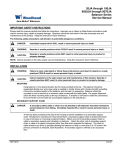

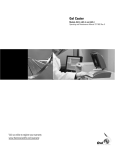
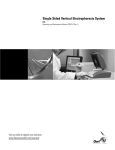
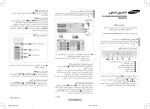

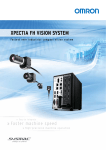
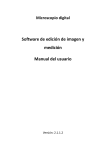
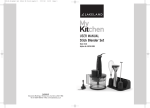
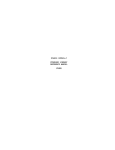
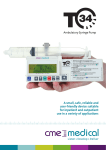
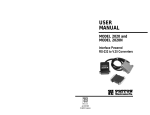
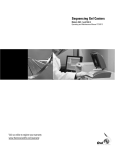
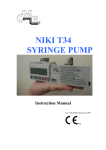
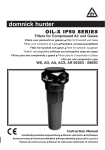
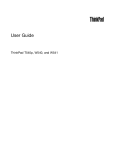
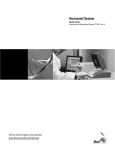
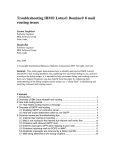
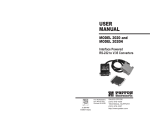

![KeyView [4823353_1.wpd]](http://vs1.manualzilla.com/store/data/005667242_1-589c8deb81b55e7c0d34a0d078158765-150x150.png)
